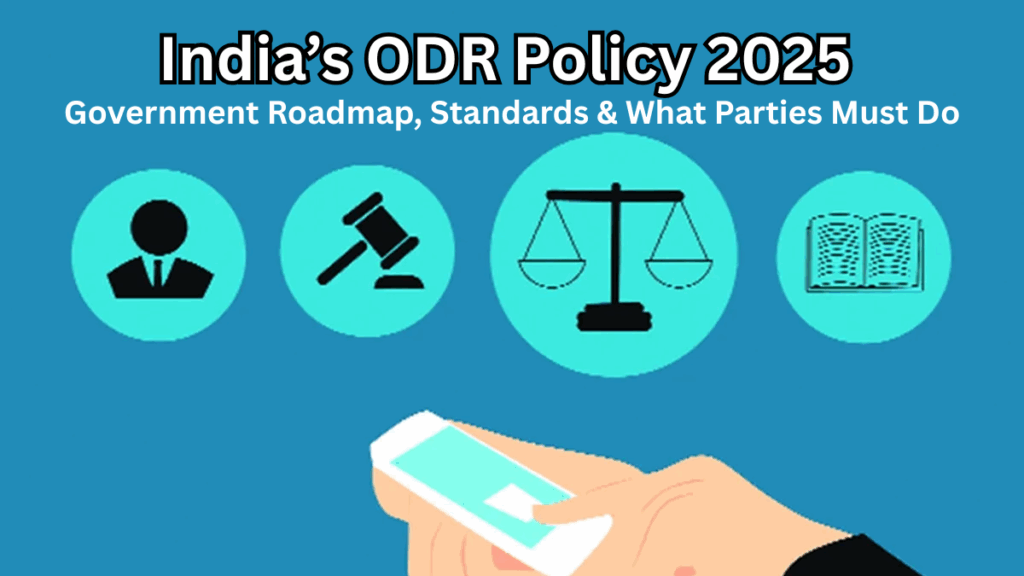The landscape of dispute resolution in India is undergoing a major transformation, with the government’s ODR Policy India 2025 aiming to make conflict resolution faster, more accessible, and tech‑driven. If you’re a business owner, legal practitioner, or even an individual seeking quicker ways to resolve disputes, understanding this policy is crucial.
So, what does this mean for you? Let’s break it down.

What Is Online Dispute Resolution (ODR)?
Online dispute resolution refers to using digital platforms and technology to handle disputes without traditional court appearances. Think of it as a virtual courtroom — but quicker, more affordable, and less intimidating.
Key features of ODR:
-
Fully digital process for dispute handling
-
Accessible from anywhere, saving time and travel costs
-
Designed for speed, making resolutions possible in weeks instead of months or years
Why Is the ODR Policy India 2025 Important?
The government’s ODR Policy India 2025 isn’t just a legal reform; it’s a cultural shift in how we approach disputes. It focuses on:
-
Efficiency: Reducing the burden on courts by moving small and medium disputes online
-
Accessibility: Ensuring justice is within reach for people across urban and rural India
-
Standardization: Setting clear guidelines for digital platforms and mediators
Government Roadmap for ODR Policy India 2025
Here’s what the roadmap looks like:
| Focus Area | Government Action |
|---|---|
| Regulatory Framework | Drafting standard rules and guidelines for ODR platforms |
| Technology Integration | Encouraging AI‑driven tools for faster case management |
| Capacity Building | Training mediators, arbitrators, and legal professionals |
| Public Awareness | Running campaigns to build trust in ODR systems |
This structured approach will help bring online dispute resolution into the mainstream, making it a trusted alternative to traditional litigation.
What Should Parties Do to Prepare?
Whether you’re a business or an individual, here’s how you can get ready:
-
Understand the platforms: Familiarize yourself with government‑approved ODR platforms
-
Review your contracts: Include ODR clauses in business agreements
-
Train your teams: If you’re a company, educate your legal and HR departments on ODR processes
-
Be open to technology: Embrace digital tools for dispute resolution rather than sticking to outdated methods
Challenges Ahead
While promising, ODR adoption faces hurdles:
-
Digital literacy gaps in rural regions
-
Data security concerns with sensitive information handled online
-
Resistance to change from those used to traditional courts
Addressing these challenges will be key to the success of ODR Policy India 2025.
FAQs
What types of disputes can be resolved through online dispute resolution?
ODR works well for commercial disputes, consumer complaints, family issues, and small claims that don’t require physical evidence presentation.
Is ODR binding like a court judgment?
Yes, depending on the process chosen (arbitration, mediation, or conciliation), ODR outcomes can be legally binding and enforceable.
How can businesses integrate ODR into their contracts?
Businesses can add specific ODR clauses mentioning the platform and process to be used in case of disputes, making the resolution smoother.
Will the ODR Policy India 2025 replace courts entirely?
No, it will complement the judiciary by handling cases that can be resolved digitally, easing the pressure on traditional courts.
Click here to learn more
